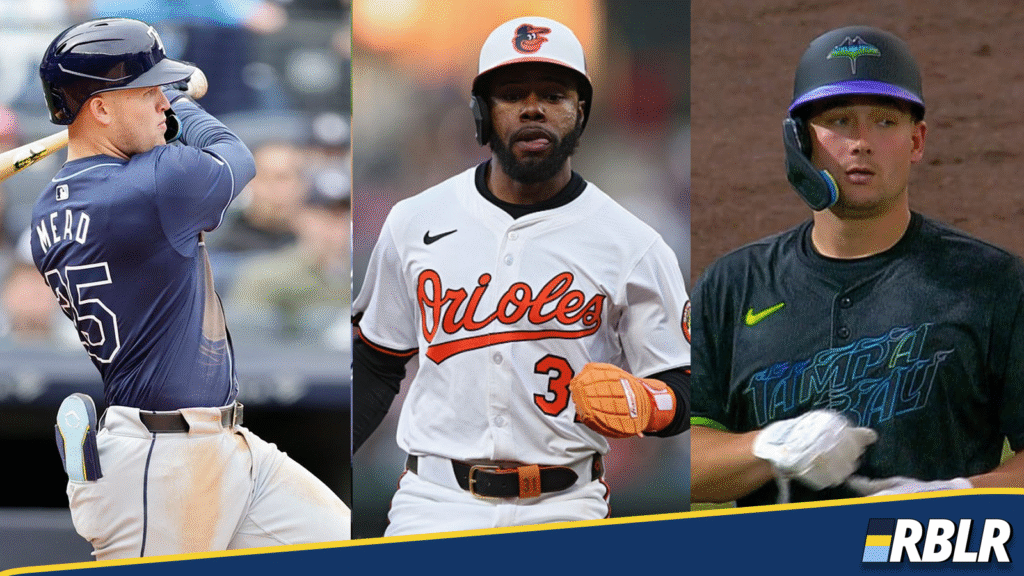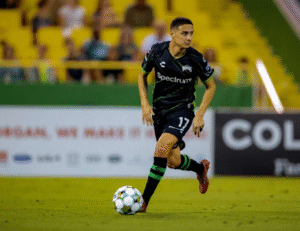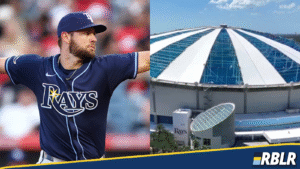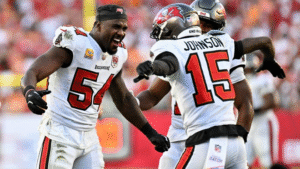RBLR Rays Roundtable #19 – #Need4Mead, Big Bats, & AL East Momentum

This week, our writers dove into Curtis Mead’s recent surge and what it could mean long-term for the Aussie’s fit on the roster, and then we dove into a draft target outside of the first round as well as some trade targets ahead of the deadline. We round it out by reviewing the strong performance the team has shown over the last month.
Dustin Teuton (u/FLBoy19) : Mead is mashing
On August 5th, 2023, I made a Reddit post I had been waiting months to make: Curtis Mead was starting at third for the Rays against the Tigers. After rushing home the day before hoping to catch Mead’s first MLB at-bat, I was ecstatic. Mead’s run from 2022 through the 2023 season in AAA was fantastic. As a 21- to 22-year-old, he posted a sub-20% strikeout rate and a 120+ wRC+ against pitchers averaging nearly 26 years old.
Rays fans were optimistic, but that optimism faded quickly. After a solid MLB debut, Mead struggled to consistently impact the ball, resulting in a .049 ISO in 2024 and dampening fan enthusiasm. Still, there were encouraging signs. Mead appeared to move past the fractured wrist he suffered in 2023, showing increased bat speed (71.2 to 74 MPH), higher average exit velocity (83.5 to 88.8 MPH), and an improved squared-up rate (18.9% to 22.9%). Recovering from a power-sapping injury takes time, and the gap between MLB and AAA pitching is wider than ever.
Mead needed more time and reps, as seen in his middling whiff rate and poor chase rate. Even amid early-season struggles, his contact rates remained above average at 83.2% overall and 91.8% in-zone. He also made major strides in plate discipline – dropping his chase rate from a rough 36.7% to a comfortably plus 24.1%. Contact quality improved as well, with a 90.3 MPH average exit velocity, a 4.2% boost in hard-hit rate, and a 2.7% increase in barrel rate.
These peripherals have fueled a 111 wRC+ through 110 plate appearances. He’s not striking out at an alarming rate (23.6%), his ISO is respectable (.135), and he’s adding defensive versatility—posting 2 OAA across 228.2 innings while playing third, second, and first.
Mead represents something increasingly rare: a prospect developing at the MLB level. In today’s game, where instant results are expected and patience is short, players who struggle early are often cast aside – especially on competitive teams. Mead reflects a development path once common, and now, at 24, the Aussie appears ready to seize his opportunity. If the long-rumored departure of Brandon Lowe happens, Mead could be next in line.
Jacob Macauley (@raysfarmreport) : Potential draft target
The Tampa Bay Rays are set to have a very eventful MLB Draft; holding five picks inside the top 67 and ranking 2nd in bonus pool with $16.7M. This, paired with the fact that they have three first-round picks, leads most people to believe that they can be very creative maneuvering their money around. As I slowly start to dive into the draft prospects this go around, one player enamors me.
Quentin Young is a prep position player from Oak Christian HS with a lofty power ceiling – showcasing a 115.4 max EV at the recent draft combine and has plenty of frame to still grow into at 6’6.
The major long-term concern with him will certainly be his hit tool. Young posted a dreadful 68% IZ-Contact%, which, just for reference, would rank last in MLB behind Gabriel Arias and Rafael Devers. Another issue with Young might be finding him a defensive home, as some talent evaluators project him long term at 3B with his plus arm, and some project him in the outfield with his average speed.
Given the elite power potential at such a young age and average athletic traits, I think this makes Young a prime pick at one of the two first–round compensatory picks the Rays hold in this upcoming major league draft.
Jake Shutters (@JakeShutters) : Addressing a potential need in CF
Last week, I discussed the Rays potentially not needing to make many adds at the trade deadline. This week presents the flip side of that idea – highlighting where the Rays could look to add. The Rays have been on a tear lately and have scored the most runs in baseball, even with an injury depleted roster. However, even with the impending return of Jonny DeLuca looming, the Rays could look at either a rental or long term center field option, in a market where plenty could be available.
Currently, the center field duties are split between Jake Mangum and Kameron Misner, who both present different issues in their game.
Mangum is a *fine* defender in center field, as he has above average OAA, has a positive 1.5 feet vs average on outfield jumps, and a decent arm – all of which are good abilities to have, but his offense is heavily BABIP dependent and he lacks the ability to impact the baseball.
Misner is a phenomenal defender in CF, but has shown to be overmatched on offense. Since April 18th, Misner is running a 30 wRC+ and a 37% strikeout rate, dipping his season wRC+ below 80. On a team looking to compete for the division, that cannot hang. DeLuca seems to be the savior for the position, but the Rays don’t necessarily know what they are getting out of him; his health has been an issue this year.
Whether it’s a rental piece like Harrison Bader, seeing a nice resurgence with a 117 wRC+ by pulling the baseball in the air and 3 OAA in center field, Cedric Mullins (who profiles well at GMS field, but is not a phenomenal defender), or a long term option like Jacob Young who plays elite defense (4 OAA in CF) and possesses good plate skills (24.2% chase rate, 16.9% whiff rate, and 12.7% K rate). Luis Robert is an option as well; he has some tools offensively and still can defend relatively well. It’s a good year to need a CF, and the Rays may very well look to add one to bolster an already well-rounded roster.
Sandy (@SandyAndTheRays) : To the top of the East
The Rays have been red hot, and it seems like everyone’s taking notice — Rays fans, of course, but also MLB (with their constant Rays propaganda), and fans of other teams, especially around the AL East.
But there’s more to the story than just “the Rays are doing well.” Yes, they’re winning — and lately, they’ve been the mirror opposite of the Yankees. As of this writing, the Rays are 7-3 in their last 10 games, while the Yankees have slumped to 3-7. Tampa Bay now sits just 1.5 games behind New York in the division.
What’s more impressive is how the Rays have been winning — who they’ve been up against and by what margins. In this 10-game stretch, they’ve taken on tougher competition in the Mets and Tigers and won both series, even handing the Mets their first series sweep of the season. They’ve racked up some eye-popping scores: a 7-5 comeback win after trailing 5-1 in the opener against the Mets, a 9-0 shutout to close that series, and 14-8 and 8-3 victories in the first two games against Detroit. The only real trouble came against the underperforming Orioles — Tampa Bay split that series — but even then, their lone win featured a historic comeback from an 8-0 deficit.
Part of what’s driving the Rays’ surge: Brandon Lowe heating up with a .315 average and 11 RBIs in June, Taylor Walls adding spark with clutch hits, and Matt Thaiss making an unexpected impact at the plate — including a four-RBI game in the Tigers series. On the mound, the pitching staff has been solid, led by Ryan Pepiot’s consistent performances, Drew Rasmussen’s team-best 2.61 ERA, and Shane Baz, who’s had some rocky outings but delivered a dominant, scoreless start against the Mets — all providing valuable depth and stability.
Combining timely hitting with reliable pitching, the Rays have positioned themselves as serious contenders in the AL East. They’ve shaken up the division — and with this momentum, they’re showing they’re here to stay.
The RBLR Rays Roundtable is a weekly collection of analysis, insight, and perspectives from a cast of writers assembled because of their unique backgrounds and experience. Check this space weekly for new updates and features covering the Tampa Bay Rays, the Rays’ minor league prospects, and more!







